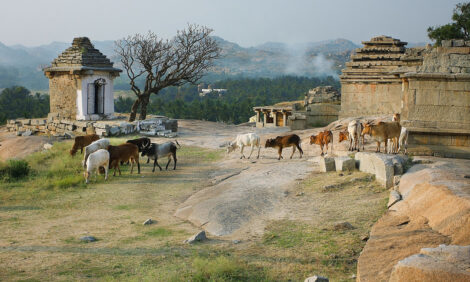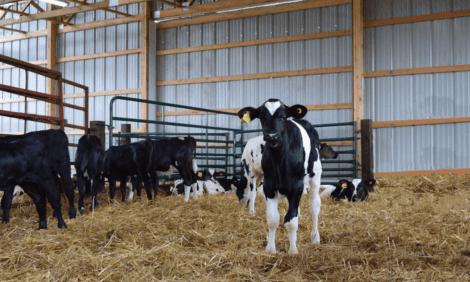



Mexico Livestock and Products Annual Report 2008
By USDA, Foreign Agricultural Service - This article provides the cattle industry data from the USDA FAS Livestock and Products Annual 2008 report for Mexico. A link to the full report is also provided. The full report includes all the tabular data, which we have omitted from this article.Situation and Outlook
Executive Summary
Mexican cattle inventories for 2009 are expected to increase 1 percent, a little more than a 0.3 percent increase for calendar year 2008 due to a 20 percent reduction in cattle exports to the United States and the higher prices of red meat. Cattle slaughter figures for 2009 are forecast to almost increase at the same increased rate as seen in 2008 (2 percent) because the need for feedlot operators to reduce inventories due to increasing feed costs.
Although 2008 imports of cattle are estimated to increase by 63,000 head they are not expected to increase in 2009. In 2009, beef production and consumption are also not expected to see significant growth, while imports will grow a modest 4.6 percent. The beef production forecast for 2008 is slightly higher than the previous year (2.3 percent), while total consumption grew slightly more (3 percent) helped by increasing in imports (7 percent).
Narrative on Supply, Demand, Policy and Marketing Production
Production
Beef production for 2009 is forecast to increase only marginally over 2008, reflecting dampened consumer demand resulting from higher prices. This continues the trend from 2008, as beef production forecast in CY 2008 only increased about 2 percent compared to 2007 level.
Reducing the demand for beef is not only higher input costs related to feed but also as a consequence of the price increases in other costs such as petroleum, although less than one-third of Mexico’s beef production comes from feedlot operations, which are most significantly affected by higher grain prices. Despite a higher slaughter, total 2009 cattle inventories are expected to increase over 2008 as feedlot placements could continue to decline, due to higher feed costs. Thus more cattle are expected to be grazed in order to avoid the higher feedlot costs.
Consumption
Beef consumption is expected to grow at a slightly minor pace in 2009 (2.2 percent) than in 2008 (3 percent). Due to, as mentioned previously, higher prices of beef are causing significant changes in middle and lower income consumers’ purchasing decisions. This type of meat is the first to be substituted when prices increased and poultry oversupply has and will continue to make the price relationship even more favorable for substitution in the short term. Only the upper-middle and higher income consumer can support the higher price of beef without looking to change consumption patterns.
Trade
Mexican cattle exports to the United States is forecast to increase in 2009 reversing a downward trend in 2007 and 2008. The decrease in the export of calves to the United States in 2008 is primarily due to low replacement demand of cattle in the U.S. feeding pens because of the increase in production costs (raw material for feeding cattle and fixed costs in transport).
While not expected to grow in 2009, the new estimate for Mexico’s cattle import figure is roughly 144,000 head of cattle in 2008, nearly 78 percent more than 2007 data. Although Nicaragua, New Zealand, and Australia were the main suppliers of cattle to Mexico in previous years, it appears that this year U.S will be the largest supplier, close to U.S. export levels in 2002 (pre-BSE cattle, 150,000 head).
For 2009, an increase in Mexican beef exports is expected as a consequence of greater stability in prices and the benefit of new markets such as Russia and Singapore. Although not currently allowed, the Russian Government has recently audited 11 Mexican establishments in an effort to officially certify them. The forecast for Mexican exports of red meat (pork and beef) during 2008 will not show the same growth as that of 2006 to 2007 (13.6 percent) because of internal efforts to strengthen its domestic inspection and safety systems causing a temporary halt to exports.
Beef imports from the U.S, as well as from Canada, are expected to increase at a marginal rate in 2009, despite higher beef prices. More impressively, total beef imports from the U.S. are expected to increase in 17 percent in 2008. This volume continues to include 90 percent boxed beef and 10 percent beef carcasses.
Policy
The animal feed companies and animal producers are passing through a difficult period in 2008 due to the higher grain prices, a tendency which will continue for the rest of the year. An element that could help compensate for the increase in feed costs and also in prices of red meat is the money that SAGARPA has been authorized to use to provide a subsidy for the purchase of feed inputs. For each ton of domestic grain (white corn, yellow corn, sorghum and wheat) feeders of chicken, pork and beef purchase, they will then receive 200 pesos from the Government. The purpose of this measure is to support meat production at a reasonable cost in order to provide consumer sufficient supply without significant increases in prices.
Although in May 2008, Mexico received a “Controlled Risk” categorization from the OIE, the Mexican border is still closed (since January 2003) for following products from U.S. and Canada.
- Live cattle (except for dairy cattle under 24 months)
- Boneless and bone-in meat from cattle 30 months of age or older
- Products derived from non-protein-free tallow
- Gelatin and collagen prepared from bone
- Ruminant meal
- Ground beef
Marketing
The Mexican Government is actively searching for export markets to improve Mexican exports and help Mexican producers, such as the opening of the Chinese market to Mexican pork products. In addition, the Supports Program “Programa Soporte 2008” is orientated among other things to cattle, meat and processed meat products. Its objectives are as follows.
- Perform studies to development markets.
- Explore certification of quality for processed food products.
- Employ generic processed food products campaigns.
- Develop commercial selling missions, promotional fairs.
- Promote producers' integration into collective brands.
- Host forums on market integration.
In the present year the Program for the Stimulation of Cattle Productivity (PROGAN) will continue in which Mexican cattle buyers receive financial assistance from the government to
purchase animals of higher quality genetics. In addition, more producers are being certified with “Sello de Calidad Suprema.” This certification is given by companies and organizations both of whom are recognized worldwide and this certification guarantees the health, sanitation and top quality of the Mexican food-processing products, including meat.
Pork continues to be purchased by consumers in traditional Mexican markets where most butcher shops are located. However, due to the fact that women are increasingly entering the workforce, consumers are increasingly buying meat products and special cuts at supermarkets.
The U.S. Meat Export Federation (USMEF) office in Mexico City continues marketing promotion programs for U.S. red meats.
U.S. livestock, beef and pork exporters, new to the Mexican market, are also encouraged to contact the following trade organizations for further market information.
Further Reading
| - | You can view the full report by clicking here. |
List of Articles in this series
To view our complete list of Livestock and Products Annual, and Semi-Annual reports, please click hereOctober 2008


